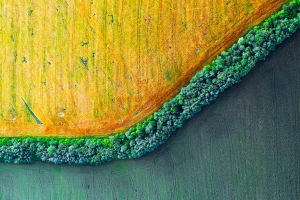Beech tree, alias hemp oak diamond.
It is widely distributed in Asia, Europe, and North America, and is one of the main species of temperate broad-leaved deciduous forests.
The fruit of the beech is also used as food for small mammals. There are about 10 species of deciduous ornamental and timber trees in the genus Beech, which are native to temperate and subtropical regions of the Northern Hemisphere.
Below, you can take a look.
1. Beech can provide a variety of nutrients for the human body
Beech fruit also called beech is a nut of high nutritional value, this nut has a large amount of protein and a variety of amino acids and vitamins.
There are some unsaturated fatty acids present, these substances are necessary for the normal work of the components of the human organ, so the consumption of beech can play a nutritional effect on the human body.
2. Beech can be used to extract oil
The fruit of beech is a nut with large oil content, the nuts collected, you can squeeze a large amount of oil for human consumption.
There is a good economic value, and then the beech can not only be used for human consumption but also some important food for local wildlife is an important part of maintaining ecological balance.
3. The role of beech wood
The wood of beech trees is very hard and has a light aroma and a clear texture, so it can be used as decorative objects in the home.
Beech wood is particularly strong and resistant to deformation and is the first material used to make fine furniture and ships and vehicles.
Beechwood is a light reddish brown color that does not decay underwater and can be used for interior fittings, decorative items, tool handles and cargo containers.
In particular, some variants of the European beech, such as the bronze-leaved beech or purple beech, have copper-colored leaves.
Dick's beech has narrow, glossy, spirally arranged leaves.
Beech trees are heavy and strong, impact resistant, easy to bend under steam, can be made into shapes, good nailing properties, but are easy to crack.
Beech trees have a clear grain, uniform wood texture, and soft, smooth tones.
Beechwood is dense and heavy, with a fine and straight grain and a tissue structure with fewer spotted knots.
The American beech has narrow, coarsely serrated, blue-green leaves with many veins, 13 centimeters long, turning yellow in autumn.
The European beech has slightly shorter, ovate, dark green leaves that turn reddish-brown in autumn, but do not wither through the winter in areas with a suitable climate.
Among Asian species, the beech is the rice heart tree.
Japanese beech or West Boulder's beech is planted in the Western Hemisphere as an ornamental plant.
The Mexican beech is a timber tree, usually 40 meters tall, with cuneate leaves.
F. Orientalis is a pyramidal European tree about 30 meters tall with a gray trunk and cuneate leaves up to 15 centimeters long with undulating margins.
Disadvantages of beech
The color of beech furniture is not so uniform, which is due to the age of the beech tree.
The color and density of beech wood vary depending on the age of the tree, so you have to pay special attention to the age of beech wood when choosing beech wood furniture.
Beechwood is prone to cracking and deformation in dry conditions, affecting its beauty and use, which is one of the important reasons why beechwood furniture is not in the eyes of the top.


